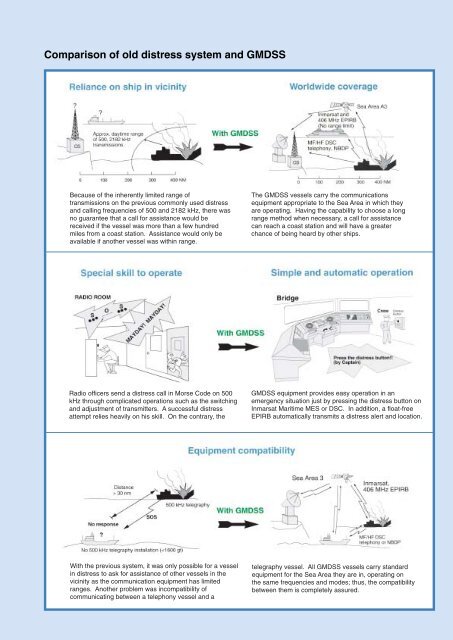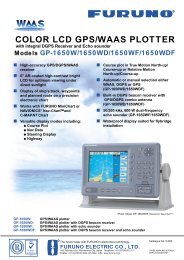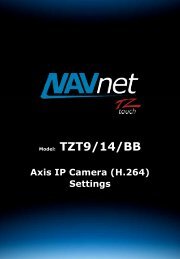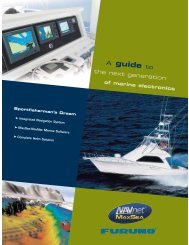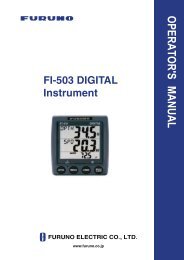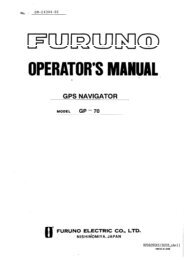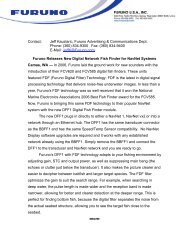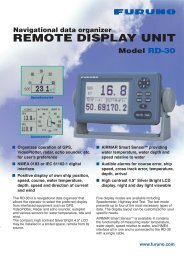GMDSS Guide (763 KB) - Furuno USA
GMDSS Guide (763 KB) - Furuno USA
GMDSS Guide (763 KB) - Furuno USA
Create successful ePaper yourself
Turn your PDF publications into a flip-book with our unique Google optimized e-Paper software.
Comparison of old distress system and <strong>GMDSS</strong><br />
Because of the inherently limited range of<br />
transmissions on the previous commonly used distress<br />
and calling frequencies of 500 and 2182 kHz, there was<br />
no guarantee that a call for assistance would be<br />
received if the vessel was more than a few hundred<br />
miles from a coast station. Assistance would only be<br />
available if another vessel was within range.<br />
Radio officers send a distress call in Morse Code on 500<br />
kHz through complicated operations such as the switching<br />
and adjustment of transmitters. A successful distress<br />
attempt relies heavily on his skill. On the contrary, the<br />
With the previous system, it was only possible for a vessel<br />
in distress to ask for assistance of other vessels in the<br />
vicinity as the communication equipment has limited<br />
ranges. Another problem was incompatibility of<br />
communicating between a telephony vessel and a<br />
The <strong>GMDSS</strong> vessels carry the communications<br />
equipment appropriate to the Sea Area in which they<br />
are operating. Having the capability to choose a long<br />
range method when necessary, a call for assistance<br />
can reach a coast station and will have a greater<br />
chance of being heard by other ships.<br />
<strong>GMDSS</strong> equipment provides easy operation in an<br />
emergency situation just by pressing the distress button on<br />
Inmarsat Maritime MES or DSC. In addition, a float-free<br />
EPIRB automatically transmits a distress alert and location.<br />
telegraphy vessel. All <strong>GMDSS</strong> vessels carry standard<br />
equipment for the Sea Area they are in, operating on<br />
the same frequencies and modes; thus, the compatibility<br />
between them is completely assured.


